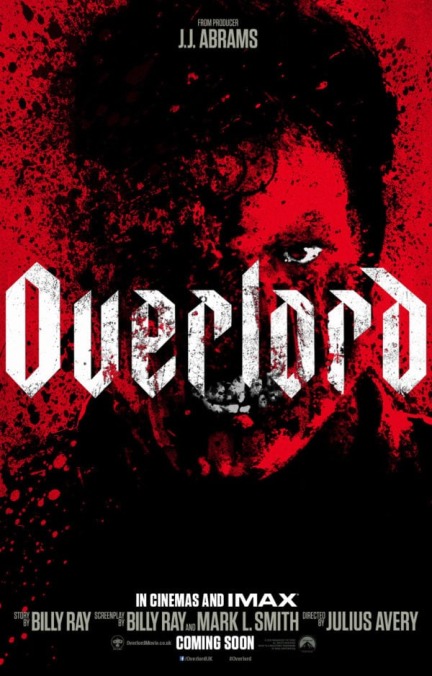The Nazis generally, and Josef Mengele in particular, committed so many horrific atrocities in real life that amplifying their crimes for fictional purposes feels like overkill. Still, if Quentin Tarantino can revise the circumstances of Hitler’s death for our cathartic amusement, there’s no reason why the action-horror hybrid Overlord shouldn’t inject some supernatural nightmare fuel into Nazi medical experimentation. Posing initially as a generic WWII grunts-on-a-mission saga, the film takes a hard phantasmagorical swerve toward something more akin to The Descent, with the underground cave swapped out for a bunker. It’s reasonably good, creepy fun, provided you’re not troubled by fleeting, uncomfortable thoughts like “Hey, that screaming bloodthirsty mutant monster could theoretically be a reanimated Anne Frank.”
Set in the hours just before D-Day, Overlord opens in midair, as a group of paratroopers wait for its plane to reach its target: a Normandy church atop which the Germans have installed a radio tower, which needs to be destroyed if Operation Overlord is going to have any air support. Screenwriters Billy Ray (The Hunger Games) and Mark L. Smith (The Revenant) quickly establish the standard collection of war-movie personalities, including nervous yet courageous protagonist Boyce (Jovan Adepo), New York wiseacre Tibbet (John Magaro), unmistakably doomed naïf Chase (Iain De Caestecker), and mysterious badass Ford (Wyatt Russell). When the plane gets shot down, this small unit of survivors makes its way to the church, assisted by young local Chloe (Mathilde Ollivier), who lives nearby and has become the unwilling sexual plaything of an especially detestable SS officer (Danish actor Pilou Asbæk, best known to American audiences as Game Of Thrones’ Euron Greyjoy). Their mission requires some modification, however, once Boyce accidentally discovers that the building houses something far more worrisome than a radio tower.
Subverting a cliché-heavy genre template requires a tricky balancing act: The setup needs to look conventional, but if it’s too conventional, the audience may fall asleep before the twist kicks in. Overlord’s marketing pretty much gives the game away, but director Julius Avery (taking a sizable leap in ambition and budget from his little-seen feature debut, Son Of A Gun) still isn’t taking any chances, transforming the expository first scene on the plane into a spectacularly chaotic set piece guaranteed to quicken pulses. The movie also cheats a little after settling down at Chloe’s house, using Chloe’s “sick” aunt—who’s implausibly been allowed to return home after some time in the Nazi lab—to goose the tension during what would otherwise be narrative downtime. One also has to swallow that Boyce, after gaining entrance to the church via a truck full of corpses and seeing unspeakable horrors (including a living head minus a body—just an exposed spinal cord), would inject a dead buddy with the serum he stole from there. It’s not at all clear what favorable outcome he expects, and the results are, shall we say, discouraging.
Still, the able low-wattage cast manages to sell most of this cheerfully gory nonsense. Adepo, who held his own opposite Denzel Washington and Viola Davis in Fences, embodies instinctual decency, making Boyce’s unerring desire to do the right thing, even when that’s potentially suicidal, seem noble but not saccharine. His underplayed fortitude bounces nicely off of both Russell (son of Kurt and Goldie), who played the goofy overage stoner in Everybody Wants Some and here demonstrates that his range extends to credible taciturn brooding, and Magaro, once again perfectly mimicking (as he did in Carol) the look and manner of a mid-20th-century Bronx loudmouth. Throw in a very hissable Asbæk and some decent (if familiar) work from the makeup, prosthetics, and special effects teams, and you’ve got a solidly entertaining, suitably mindless chiller that cranks the dial on Nazi evil up to 11. As with any zombie movie—only more so, given the real-world analogs in this case—just don’t think too hard about what its homicidal creatures were doing before their lives took an involuntary turn into undeath.

